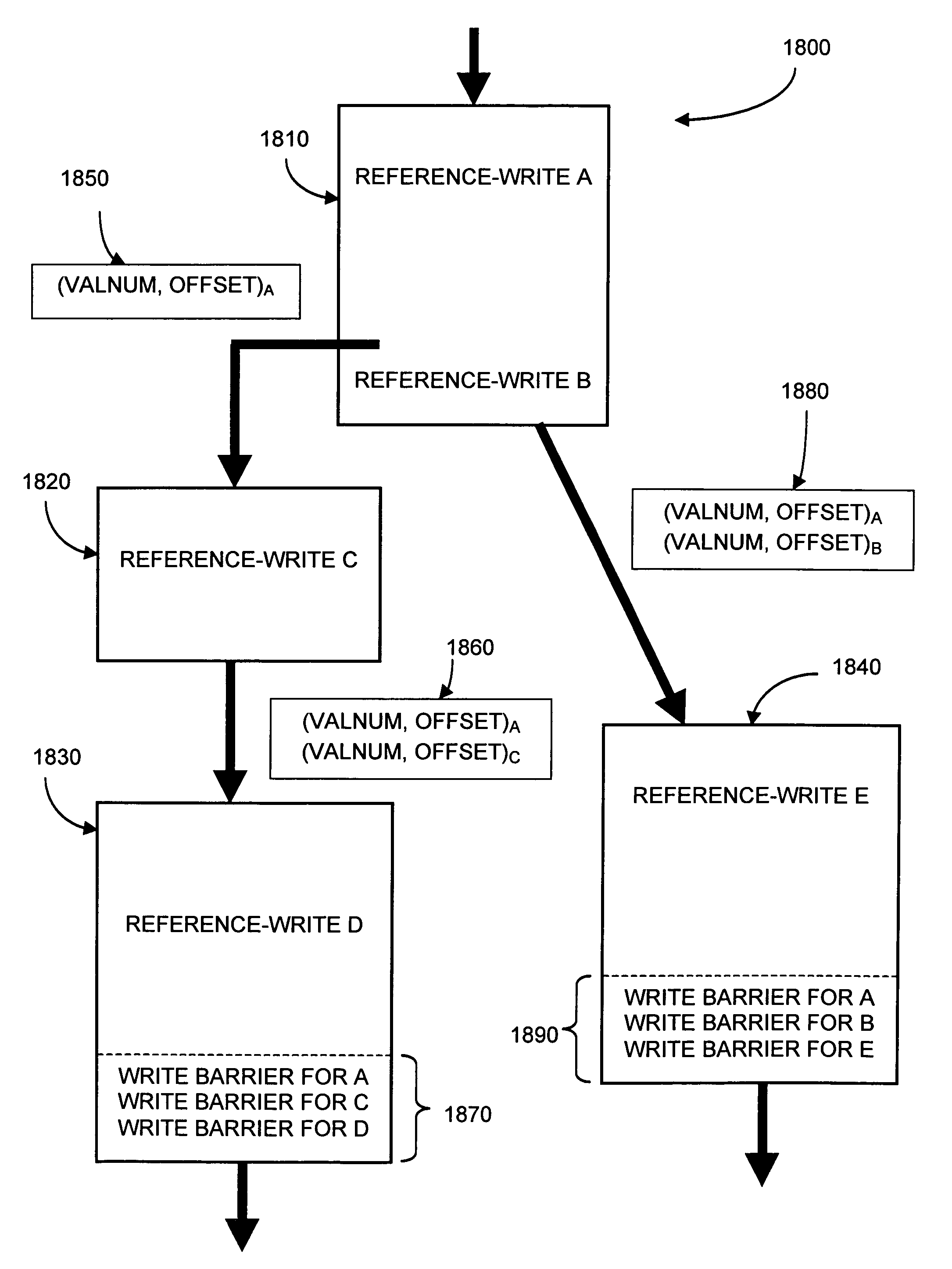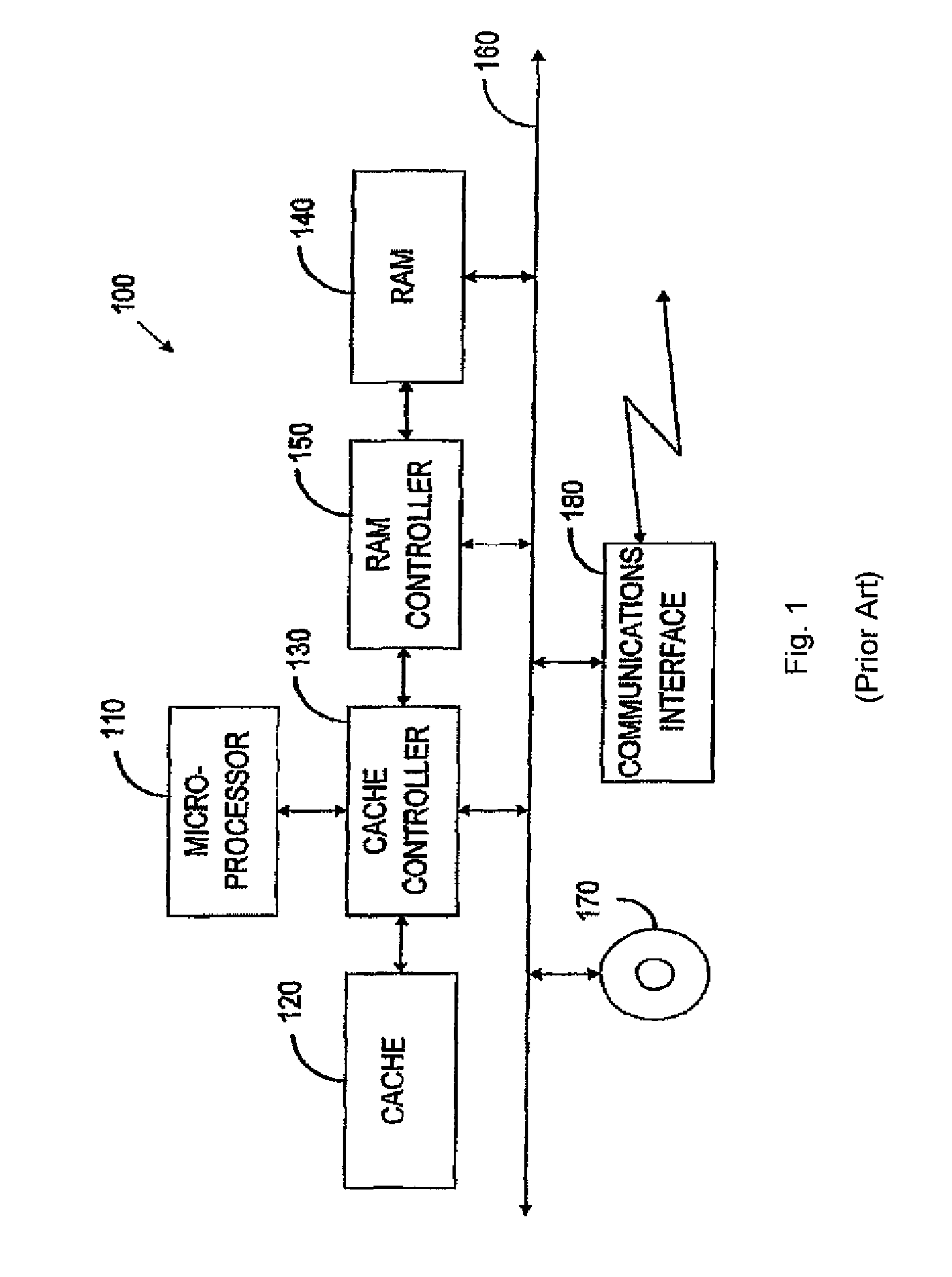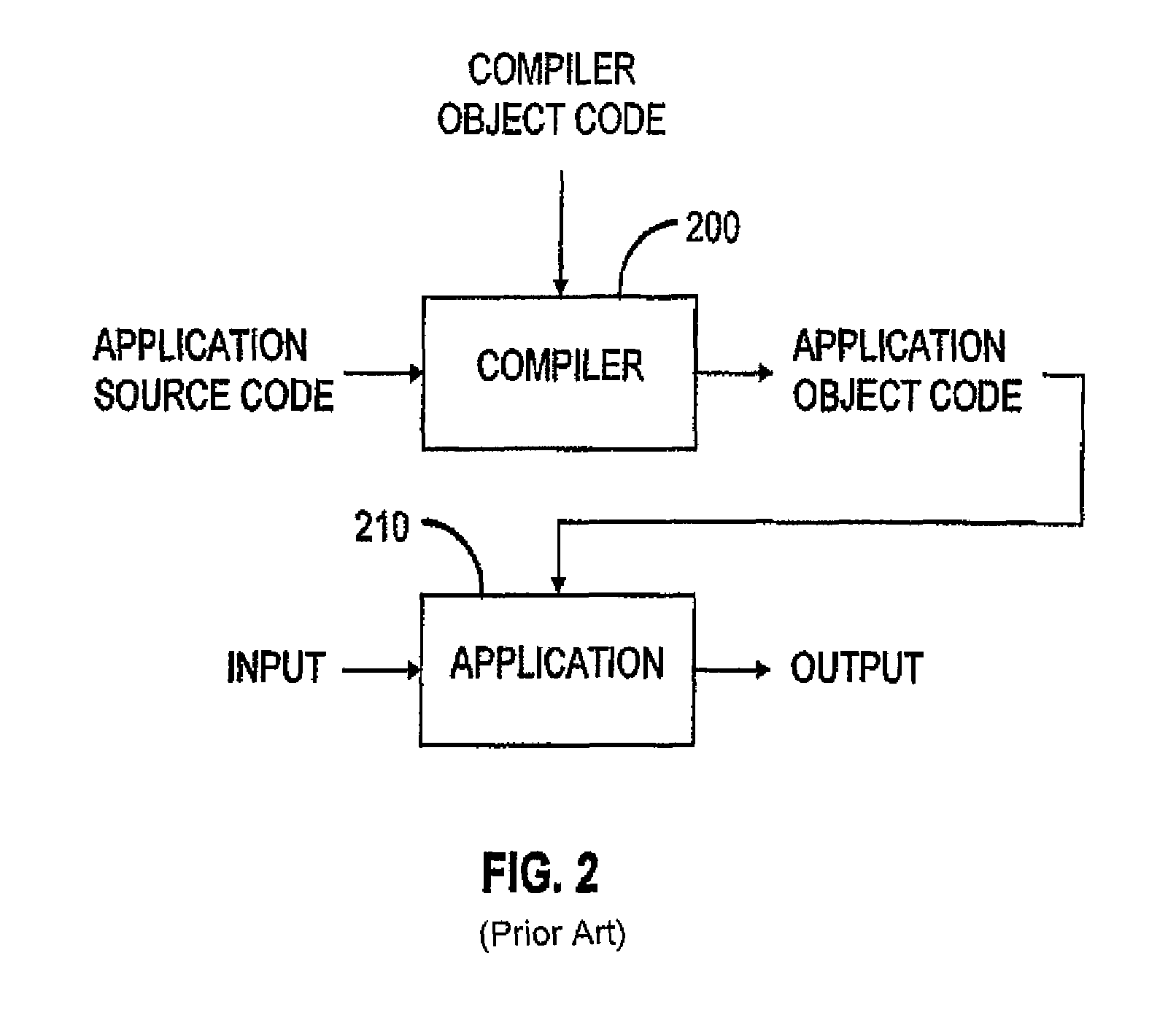Deferring and combining write barriers for a garbage-collected heap
- Summary
- Abstract
- Description
- Claims
- Application Information
AI Technical Summary
Benefits of technology
Problems solved by technology
Method used
Image
Examples
Embodiment Construction
I. Deferring and Combining Write Barriers in Compiled Code
A. Deferring Write Barriers in Compiled Code
[0093]Conventionally, a compiler emits a write barrier (i.e., write-barrier code, as shown in FIG. 7) at a location in the mutator code immediately following a reference-modifying mutator instruction. In contrast, a compiler embodying the present invention will not always emit a write barrier immediately following its corresponding reference-modifying instruction. Instead, the compiler may defer emitting the write-barrier code until a subsequent location in the mutator code. To that end, the compiler may maintain a list of reference-modifying instructions whose write barriers have been deferred. At some later point in the mutator code, the compiler may emit write barriers based on information stored in the list. Notably, the deferred write-barrier code may be emitted in accordance with various write-barrier implementations, such as sequential store buffers, precise card-marking, imp...
PUM
 Login to View More
Login to View More Abstract
Description
Claims
Application Information
 Login to View More
Login to View More - R&D
- Intellectual Property
- Life Sciences
- Materials
- Tech Scout
- Unparalleled Data Quality
- Higher Quality Content
- 60% Fewer Hallucinations
Browse by: Latest US Patents, China's latest patents, Technical Efficacy Thesaurus, Application Domain, Technology Topic, Popular Technical Reports.
© 2025 PatSnap. All rights reserved.Legal|Privacy policy|Modern Slavery Act Transparency Statement|Sitemap|About US| Contact US: help@patsnap.com



